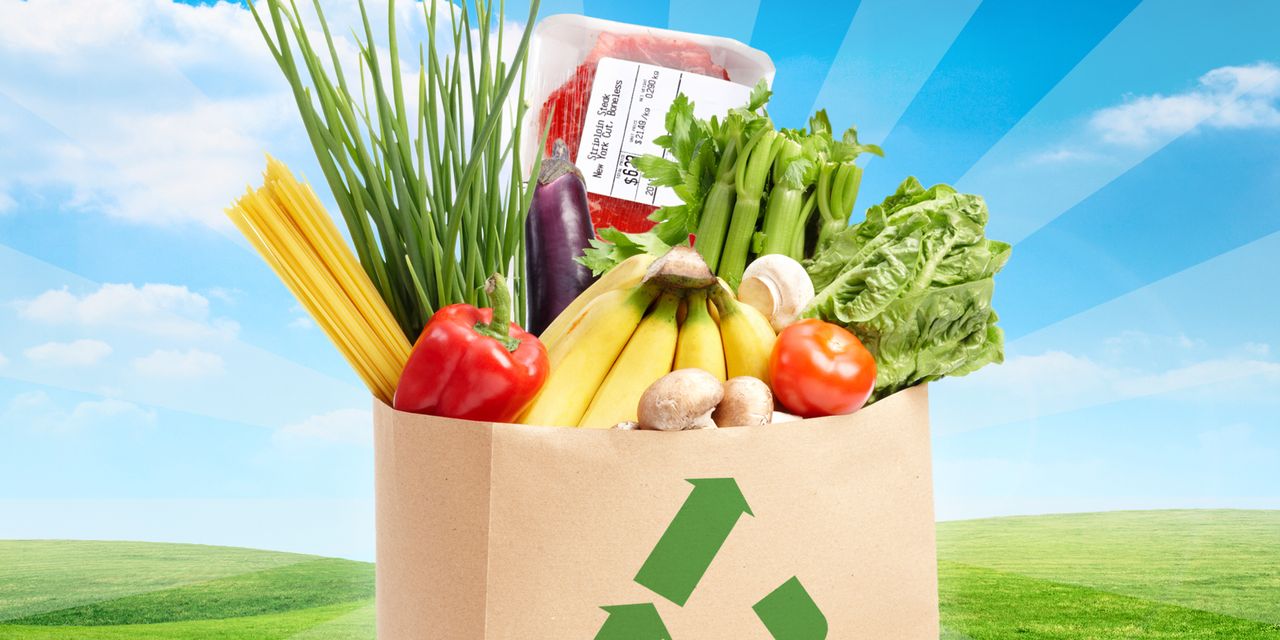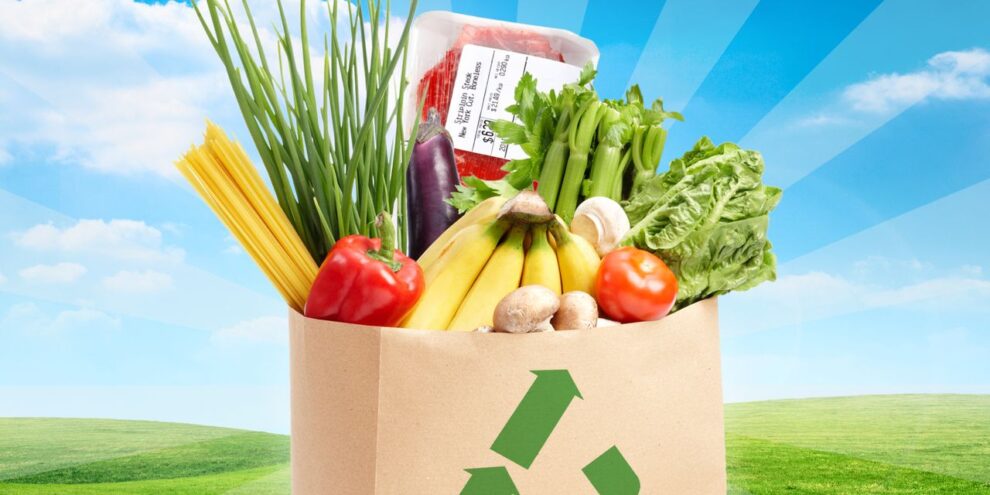
What are we upcycling?
The costly staple that’s central to our very existence — food.
About 30% of food in American grocery stores is thrown away, according to data from the USDA and waste management firm RTS, which compiled a comprehensive report on U.S. food waste. U.S. retail stores generate about 16 billion pounds of food waste every year, thrown out for reasons that range from blemishes on produce, an impending expiry date (usually set with plenty of margin) or the wrong color lid on a perfectly good jar of pasta sauce.
That’s where food upcycling delivery apps, such as two of the largest, Misfits Market and Imperfect Foods, come in. They act as matchmaker between the grocery stores, restaurants and wholesalers and mostly at-home shoppers.
“We think that there’s an incredible opportunity to take food waste, and food inefficiency, and transform that into value offerings for the end consumer,” Abhi Ramesh, CEO and co-founder of the four-year-old Misfits Market, told MarketWatch. Misfits started with less-than-perfect produce and has expanded to include meat, seafood, bakery, dairy, deli and storable pantry items. They operate in all lower 48 states and they see growth into beauty, health and other household necessities.
No doubt “upcycled” meat and seafood can be a tougher sell than an undersized apple.
Ramesh has some insight: If a grocery store runs a special on ribeye steak, for instance, typical sirloin buyers might go for the sale cut instead, which leaves too much sirloin in the butcher’s case. The store might discount the sirloin, too, but ultimately, shopper substitution of one cut for another can leave too much perishable inventory. That’s where a Misfits might step in with its speedy, ice-packed delivery service.
Or take salmon. American retail standards call for a perfectly rectangular filet. That means after trimming at the wholesaler, left over are nutrient-packed, but slightly rounded, filet ends — soon to be packaged for Misfits at a sharp discount. “I eat them every week,” says Ramesh.
“‘Inflation impacts us less than it would impact a traditional brick-and-mortar grocery store.’ ”
Cost savings
Ramesh said shoppers can expect to pay up to 20% to 50% less for their Misfits order than they might at their retail grocery store. This might be particularly enticing right now, given surging food inflation, and as higher gas receipts chew up a larger portion of the household budget.
Promotions and sales also pop up from time to time on both Misfits and Imperfect Foods, which includes a plant-based section, its own branded line, such as ground coffee, and wellness products.
Ramesh said that while inflation is impacting all businesses, including his, he has “fewer touch points” along the supply chain for higher prices to be applied. “It could be as few as farm to fulfillment center to customer,” he said. “Inflation impacts us less than it would impact a traditional brick-and-mortar grocery store. And so if prices are going up 15% over there, they’re going to only go up a few percent with us for that reason.”
The food resale sites also stress that costly waste in your own refrigerator is less likely when you’re buying with timeliness in mind and because you’re more likely to use up your delivery versus overbuying in the store.
What’s more, the sites sometimes buy directly from wholesalers or growers. The resale sites step in when the much longer supply chain journey for fruit and vegetables destined for a grocery store means they’re projected to arrive without much time for stocking and sales. Instead, the growers or wholesalers will sell this product to the “imperfection” companies. Sometimes a fruit crop in particular has to be harvested early to allow for transportation, storage and sales time. Under-ripe offerings may be all you can find in the store and the “upcycling” sites believe they can do better.
For instance, Misfits Market right now is featuring its just-on-time seasonal peaches and apricots, with added education on stone fruit storage, prepping and cooking.
How to find and order ‘misfit, imperfect’ food
Rotational inventory and plenty of standards number well into the hundreds at Misfits Market and Imperfect Foods, as well as rival Hungry Harvest. The sites allow you to easily recall your regular order, then users can add or subtract, depending what’s on offer.
Shopping for these discounts should not feel like a big compromise. Celebrity chef Bobby Flay partners with Misfits on recipe ideas, as he and others work to normalize extending the life of our food.
Environmental savings
Imperfect Foods has a running counter on its site. To date, it has saved 166,422,948 pounds of total food from the trash bin. The company aims to cut its operation to net-zero emissions by 2030.
As for Misfits, its cardboard packing boxes are 100% recyclable, and it’s testing eco-friendly insulation that protects groceries in transit. In warmer weather, it uses nontoxic ice packs made from a water-based formula. In lieu of plastic produce bags, a plant-based bag with a resin compound is substituted.
Be mindful of…
Sites pushing near-expiry and less-than-perfect food are often reliant on what’s available, so a favorite brand or packaged quantity might not be as plentiful as what you find during a search up and down the grocery aisles or from traditional online grocery retailers, such as Walmart WMT, +0.06% or Amazon AMZN, -0.68%.
Not all delivery sites will include any zip code, although Misfits is particularly proud of the third-party delivery relationships (think U.S. Postal Service, UPS, etc.) it maintains to get its goods into the hands of suburban and rural buyers as well as population concentrations.
Shoppers who are conscientious about the carbon footprint of delivery and other sustainability issues will want to seek out a site that is fully transparent about how they package, the emissions involved, their inclusion of renewable fuel QCLN, +1.45% fleet vehicles, and whether they favor bulk deliveries that cut down on overall road time, or stick with smaller runs.
Food resale shopping sites have similarities and differences with direct-from-the grower food box delivery programs. Such programs can eliminate some processing and transportation waste and provide shoppers with straight-from-the-field freshness as well as a sense of ownership in the harvest. For Community Supported Agriculture (CSAs), for instance, members buy a share of the farm’s production before each growing season. These programs aren’t, however, targeting and reducing food waste from the huge grocery and restaurant industries in the same way that the resale sites do.
Some academic experts who track the food supply chain have questioned whether food resale apps disproportionately are accessed by tech-savvy individuals with plenty of disposable income. They argue that despite numbers tracking food waste, the system does a pretty good job getting discounted wholesale product into smaller grocery stores where more lower-income folks may have access. And, they say, the food industry often turns bruised fruit and vegetables into sauces and other products.
Misfits, for its part, aims to eradicate food deserts in America by 2025.
More The Upcycler: Think twice before you trade in your old smartphone or tablet — you could make more money ‘upcycling’ on resale sites
Editor’s note: The Upcycler column aims to help you make more with less, save or earn extra money, expand your creative side and shrink your carbon footprint.
Upcycling and the Buy Nothing movement involve reusing objects for practical or aesthetic purposes, or prolonging their usefulness and diverting them from a landfill. In addition, our column will explore the benefits of repairing or upgrading more of what we already own; tapping potentially life-changing free or deeply discounted goods and services; and traveling in less expensive, intrusive and consumptive ways.
After all, if we can “upcycle” more of our time, earnings and peace of mind, everything might feel brand new.
Have your own upcycling ideas or dilemmas? Reach out on Twitter @RachelKBeals or by email to [email protected].




